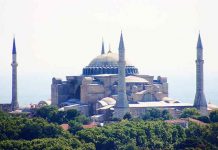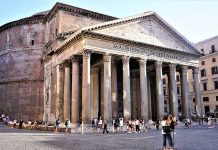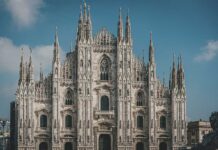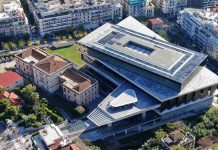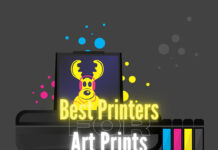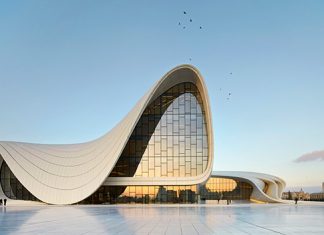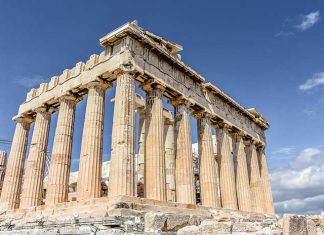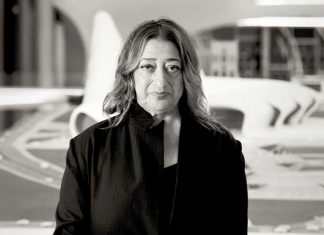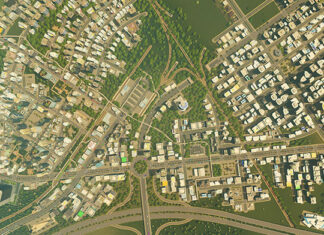Coinciding with the end of Europe’s great art movements, Rococo showed itself in many branches of art, including architecture, just like other movements. On the other hand, whether Rococo art style is a continuation of the Baroque or is a completely different style with its own characteristics is still a subject of debate today. In this article, we will talk about the application areas and characteristics of Rococo architecture style and examine sample structures.
Development of Rococo Movement
Emerging in the 18th century Europe in Paris, spreading rapidly in between 1700 and 1775 and left its influence on other artistic pleasures in a short time, Rococo is a romantic and dreamy style. Rococo style architecture, which has interior decorations that can be considered exaggerated by some people, has developed fast in most of Europe, especially in France and Germany. Although there were many supporters of this decorative architectural style, pros of the Enlightenment heavily criticized Rococo, which they found contrary to mind and logic.
It has emerged not in the light of an architectural idea or ideal, but with the desire to achieve decorative beauty and elegance. For this reason, the pioneers of Rococo art are sculptors, interior designers and painters. Rococo influences have been felt for many years not only in architecture but also in fashion, furniture and porcelain industry. Style left its place to Neoclassicism at the end of the 18th century.

Architectural Characteristics of Rococo Period
- Rococo buildings have curved decorative engravings similar to the letters s and c that we are used to from Baroque architecture.
- Pastel colors and soft tones are dominant in decorations and background colors.
- Rococo style, which mostly adorns interiors, usually has asymmetrical architectural plans and decorations.
- Some Rococo interior designs portray an idyllic scene.
- Flower motifs spreading like ivy and natural motifs such as mussel shells are frequently encountered.
- The acanthus leaf, which is a symbol of beauty, is used in stylized forms.
- Imagery decorated with humorous elements is the main theme of the frescoes and sculptures. One of the most common depictions is the child Eros.
- A waterproof plaster type called stucco was used in the interiors of the Rococo era. This very smooth plaster gave the opportunity to design various reliefs and sculptures.
- In the designs, vibrant and brightly colored patterns and ornaments were applied on the lightly colored background plane.
- Mirrors are placed in some interior Rococo examples to support the bright and enthusiastic atmosphere inside.
Rococo architecture style used to mostly preferred in halls where aristocrats hosted their noble surroundings. These invitation Rococo salons were the scene of the active life of the French intellectuals in the 18th century with their bright atmosphere, rich gold leaf decorations, light-toned colors, and glittering mirrors that make the space look wider and more spacious.
Differences Between Baroque vs Rococo Architecture Characteristics
Although the Rococo style is a slightly more differentiated version of Baroque architecture, it contains some important changes. For instance, Rococo is a much more relaxed and light style. The use of pastel colors has an important contribution to create this lightness. Moreover, the Rococo style creates a more luminous and friendly feeling of space. In baroque structures, gloomy and dark themes are often active.
The most important reason for this solemn atmospheric aspect of the Baroque style is that it was mostly preferred in the magnificent palaces and cathedrals of Europe. Rococo architecture movement, on the other hand, developed as a more bright and comfortable style, since it often adorned the interiors of elite and aristocratic residences. Additionally, the Rococo style is mostly prominent in interior design. Baroque architecture, on the other hand, showed its influence in interior, exterior and garden design.
Examples of Rococo Architecture Buildings
Although it emerged in Paris, France, it later gave important examples especially in England, Germany and Russia. Rococo architecture examples are often encountered not in the entire building, but in the restoration or additional designs of an existing building. For example, it is possible to see traces of the Rococo style in some parts of the Palace of Versailles, which is a product of the Baroque period.
Residence Würzburg
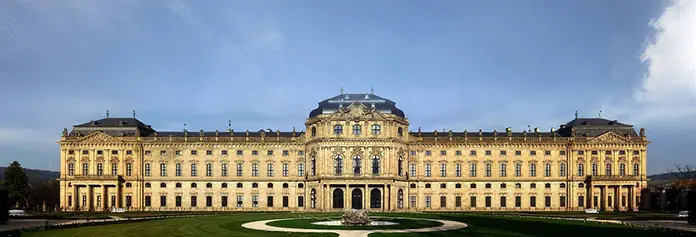
Germany is one of the countries where Rococo architecture shows the most influence and gives the most successful examples. Architect Balthasar Neumann designed the Residenze, which was built between 1720 and 1744 and was originally used as the Episcopal Palace. The counts of Schönborn who lived here placed great emphasis on their taste and style.
They decorated the interior of the palace by inviting the best architects and artists in the country. The most favorite part of this decoration is the largest ceiling fresco in the world. The fresco is one of the peak works of the Rococo decoration. In the building, there is a plan setup similar to the plan of the Palace of Versailles. Oval ceiling shapes, two-armed staircases, curled ornaments, pastel colors and various sculptures adorn the entire Würzburg Residence.
Catherine Palace

The inhabitants of the Russian Empire, who adored the elegant art of Europe, had the Catherine Palace built in 1752. The Rococo design style, which was the choice of the tasteful noble class of that period, also influenced this summer palace. On the long facades of the palace, painting in faded purple tones was used together with light colored stucco plaster. However, what stands out most from the outside is the enormous gold work of the facade, which has light tones. These shiny gold ornaments are seen all over the facade and the palace.

When we enter the interior of this Rococo palace, a much more intense gold work than the outside welcomes us. So much so that the dominant color of interior decoration is golden yellow. Against this bright color, a contrast is created by using light-toned stucco plaster in the background, just like outside.
The Italian Francesco Bartolomeo Rastrelli, who is the architect of these pale colors and shiny gold work in the Catherine Palace, is also the architect of many Baroque and Rococo designs in Russia.
Amalienburg
Amalienburg, which is among the most important works of German Rococo architecture, was designed as a hunting lodge. The lodge was built between 1734-1739. Inside, silver and blue colors dominate, not gold, which is associated with Rococo. Additionally, the main color on the exterior, which is designed much simpler than the interior, is faded pink.

There are many windows and mirrors in the building. In this way, the lightness of the Rococo style combines with the vividness of the light colors in the interior, providing a high level of illumination with daylight. The mirrored hall, located in the center of this building, distributes the light in the space thanks to its circular plan, providing an environment where elegance is felt at its peak.
The circular plan geometry of the center hall is also read from the mass of the building. The building, which at first glance seems to have a simple rectangular plan, gained movement with the circular form of the hall. In addition to ceramics decorated with Chinese motifs, there are also Rococo-specific sculptures and various ornaments in the building.
The Château de Chantilly
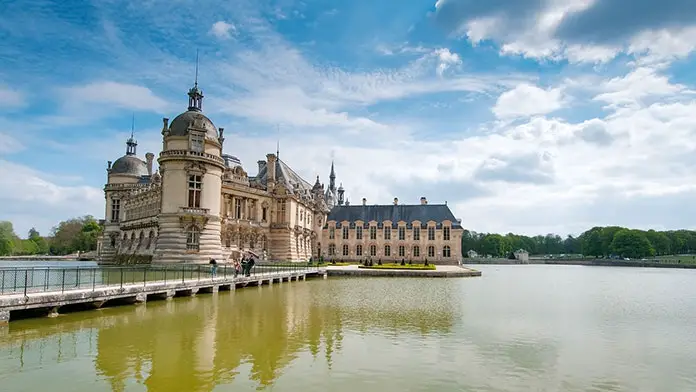
Chantilly Castle, one of the most noble buildings in France, actually has the French Renaissance architectural style. However, the Monsieur le Prince hall of the Chantilly, built in 1722, is one of the most magnificent examples of designs in the Rococo style. The interior decoration in this famous hall belongs to Jean Aubert. Also, this castle has a stunning landscape design by André Le Nôtre.
To sum up, Rococo, which emerged in the late Baroque period, is a style that adorns chateaus and private residences. It mediated the transfer of the flamboyant lives of the European aristocracy with an enthusiastic decorative taste. As a result, it faded away in an environment where the enlightenment movement and rationality developed rapidly.


